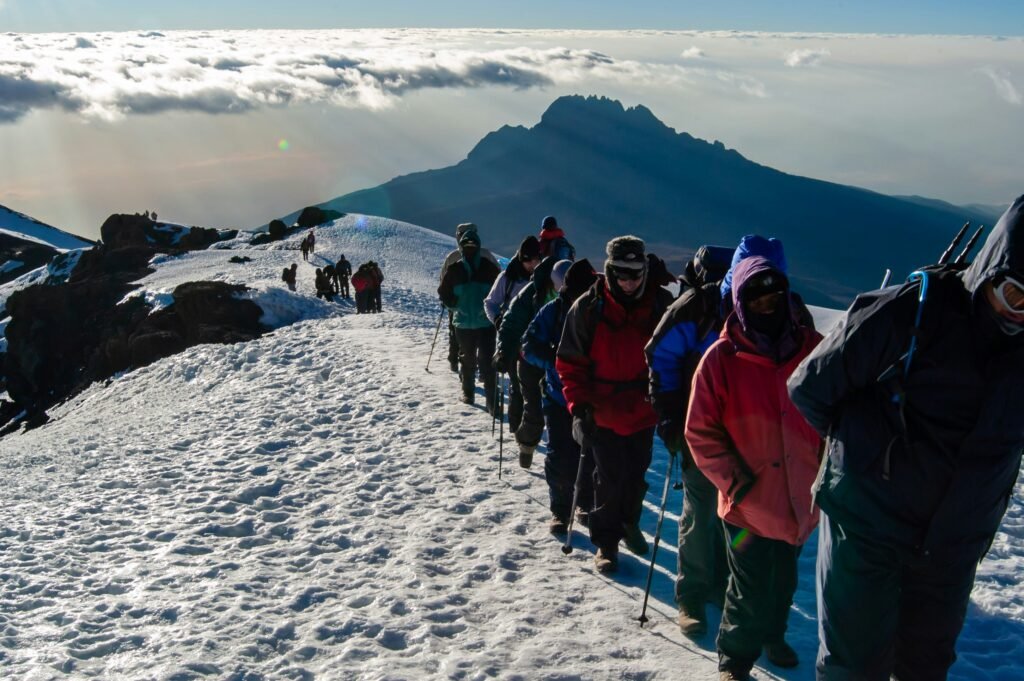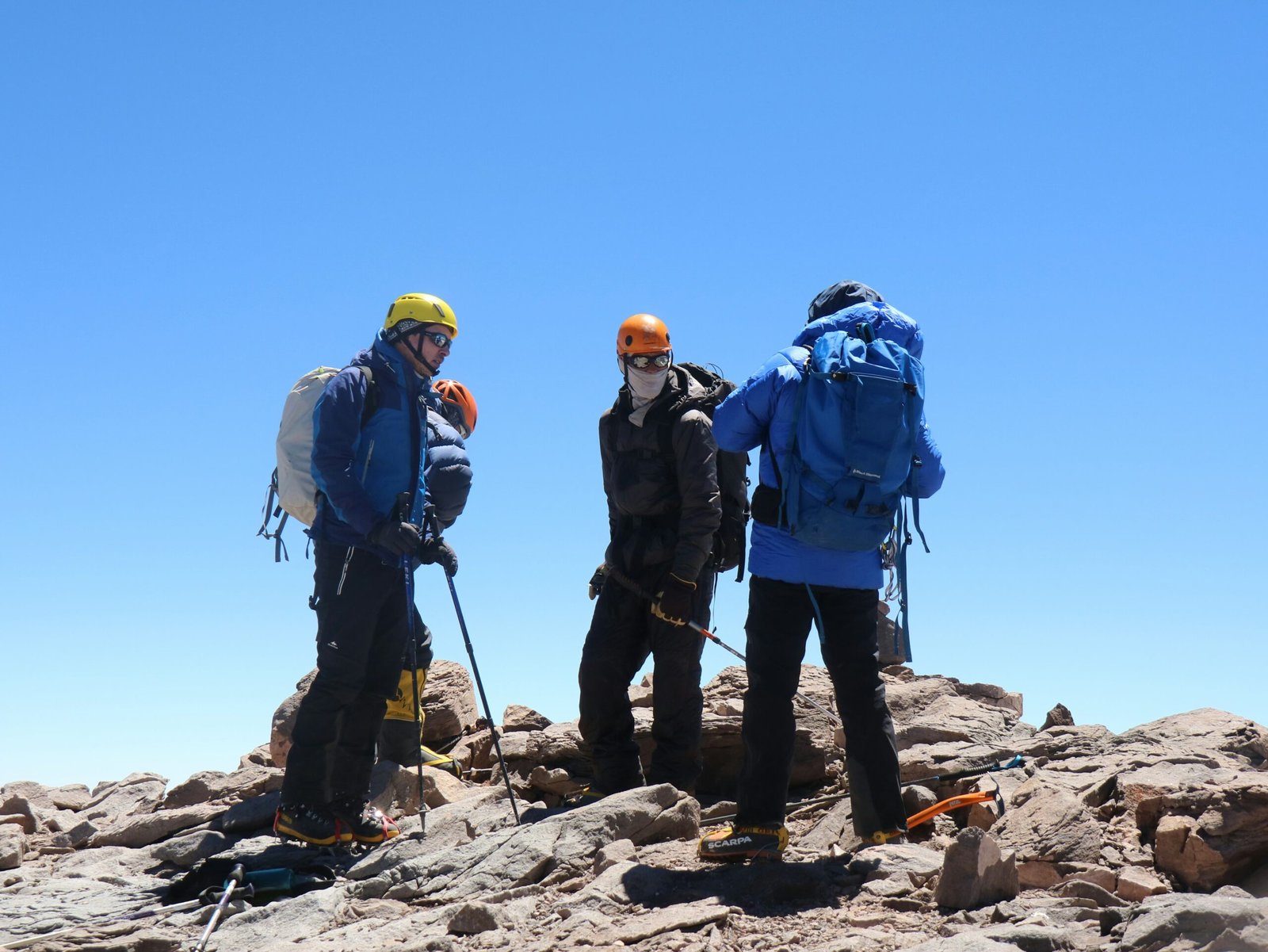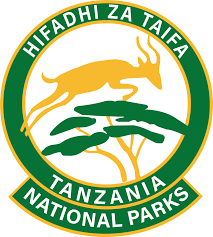Mount Kilimanjaro is the tallest mountain in Africa, reaching an extraordinary height of 5,895 meters (19,341 feet) above sea level. Located in northeastern Tanzania, near the Kenyan border, Kilimanjaro is renowned not only for its impressive elevation but also for being the world’s tallest free-standing mountain—meaning it rises independently from the surrounding plains rather than being part of a mountain range. This majestic peak is actually a massive stratovolcano composed of three distinct volcanic cones: Kibo, Mawenzi, and Shira. Of these, Kibo is the highest and home to Uhuru Peak, which is the official summit and the ultimate goal for climbers who take on the Kilimanjaro challenge. Mawenzi stands at 5,149 meters (16,893 feet), making it Africa’s third-highest peak, while Shira is the oldest and most eroded, now forming part of Kilimanjaro’s western plateau.
Kilimanjaro’s towering presence dominates the landscape and is visible from miles away, often cloaked in clouds or snow at the summit. Despite its equatorial location just 330 kilometers south of the equator, Kilimanjaro is capped with glaciers and snow year-round, though climate change has caused these ice fields to shrink significantly in recent decades. The mountain features five distinct ecological zones—from lush rainforest and heathlands to alpine desert and the arctic summit—each with its own unique climate, vegetation, and wildlife. This incredible variation in environment is part of what makes Kilimanjaro such a fascinating and unforgettable climb.

What is the height of Mount Kilimanjaro?
Mount Kilimanjaro, located in northeastern Tanzania, is Africa’s tallest mountain, rising to an impressive height of 5,895 meters (19,341 feet) above sea level. This majestic peak, standing as the world’s tallest free-standing mountain, is a prominent feature in the landscape of the region and draws thousands of adventurers and climbers each year. Unlike many other high-altitude mountains, Kilimanjaro is not part of a mountain range, making its isolated grandeur even more striking. The mountain is composed of three volcanic cones: Kibo, the highest and most prominent of the three, standing at 5,895 meters (19,341 feet) and home to the summit Uhuru Peak; Mawenzi, which rises to 5,149 meters (16,893 feet) and is known for its rugged, sharp ridges; and Shira, the oldest and most eroded cone, now forming a plateau at about 3,800 meters (12,467 feet). Kilimanjaro is famous for its snow-capped peak despite its location near the equator, with glaciers and ice fields that have been shrinking due to climate change. The mountain is home to five distinct ecological zones: lush rainforest, heathlands, moorlands, alpine deserts, and the arctic zone at the summit. The towering peak is visible from miles away, creating a striking silhouette against the surrounding savannah and plains. The climb to the summit offers trekkers the rare opportunity to experience a variety of climates and environments in a relatively short amount of time, making Kilimanjaro one of the most unique and sought-after trekking destinations in the world. Although it doesn’t require technical mountaineering skills, the climb still presents a challenging physical feat due to the altitude, long days of hiking, and the need for proper acclimatization. Reaching the summit of Kilimanjaro at Uhuru Peak
Where is Mount Kilimanjaro located?
Mount Kilimanjaro is located in northeastern Tanzania, near the border with Kenya, in East Africa. This iconic mountain lies about 330 kilometers (205 miles) south of the equator and stands as the tallest peak in Africa. It is situated within the Kilimanjaro National Park, a UNESCO World Heritage Site, and is part of the Eastern Rift Mountain range. The mountain’s imposing presence dominates the surrounding landscape, with its snow-capped summit visible from miles away on clear days. Kilimanjaro’s unique location offers climbers the opportunity to experience a variety of ecosystems, from tropical rainforests at the base to alpine deserts and glaciers near the summit, all within a relatively short trek. Its accessibility and prominence have made it one of the most popular trekking destinations in the world, attracting adventurers from across the globe who seek to summit the Roof of Africa.
What is the Temperature at the top of Mount Kilimanjaro?
The temperature at the top of Mount Kilimanjaro, specifically at Uhuru Peak (5,895 meters or 19,341 feet), can be extremely cold, especially at night. Temperatures at the summit typically range from -5°C to -20°C (23°F to -4°F), depending on the time of year and weather conditions. During the day, the temperature can rise slightly but usually stays below freezing, especially in the arctic zone near the summit. The temperatures can feel even colder due to wind chill, which can be quite strong at higher altitudes. As you ascend Kilimanjaro, the temperature drops significantly as you move through different ecological zones, from the warm and humid rainforest at the base to the cold, barren alpine desert near the top. Climbers need to be well-prepared with appropriate clothing to handle these extreme cold temperatures, particularly on summit night, which is usually the coldest part of the climb.
How Long Does It Take to Climb Kilimanjaro?
Climbing Mount Kilimanjaro typically takes between 5 to 9 days, depending on the route you choose and the time allocated for acclimatization. The most common trekking durations are:
- 5 to 6 days: This is a faster, more condensed itinerary, often chosen by those who are in excellent physical condition and can tolerate less acclimatization time.
- 7 days: A popular choice, providing a balance between time for acclimatization and a moderate pace, allowing climbers to adjust to the altitude more gradually.
- 8 to 9 days: The longer itineraries give climbers more time for acclimatization, reducing the risk of altitude sickness and improving the chances of a successful summit. It is recommended for those who prefer a more leisurely pace and better altitude adjustment.
The ascent itself usually takes 5 to 7 days, with an additional day for summiting, which typically happens at night or early morning to catch the sunrise at the summit. The descent takes an additional day, depending on the route. Taking your time to acclimatize properly and allowing your body to adjust to the higher altitudes is crucial for a safe and successful climb.













